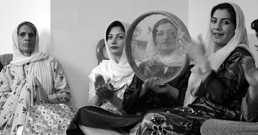In a community where families are reluctant to allow daughters to engage in public activities, Afghan photographer Nadia Parwani is a breath of fresh air. While most of her peers are already married with children, the energetic 19 year old is busy studying theatre and photography.
Nadia who has lived in Iran since she was a toddler says she has her forward-thinking father to thank for her ability to seek an education and employment. “Most Afghan men cannot accept that their daughter might work as an actress or photographer,” she says.
Three decades of civil war and occupation has sent millions of Afghans to neighbouring countries and across the world. In the 1990s there were an estimated 2 million Afghan refugees living in Iran. Today, it is estimated that there are some one million Afghan nationals living in Iran.
Nadia who is a ferocious reader lacked basic literacy and numeracy skills until she was eleven years old. The Iranian government places legal constraints on the ability of Afghan children to get an education. This coupled with social taboos on the participation of women in public life within Afghan communities means that many Afghan girls are generally less likely to have access to the classroom.
Nadia says she spent most of her childhood playing with marbles on the streets outside her home in Tehran’s impoverished Shush neighbourhood. This changed when she was able to attend a local primary school in another girl’s name. She says she would like to eventually find a job and help her family leave Shush and move to a better neighbourhood.
In recent years, the Iranian government has adopted an active repatriation policy. Nadia says she likes living in Iran adding, “I have never felt like an outsider here.” However, she is very aware of the limitation that exists for Afghans in Iran and says, “I feel bad when the Iranian government says that we have to go back. It feels like you are superfluous and that there is no place for you.”
Nadia is the quintessential modern Afghan women, balancing the weight of tradition against the appeal of modernity. She has joined the ranks of the many young Afghans, men and women who are reclaiming the past, challenging accepted norms and fashioning a new social vernacular to define the future.


